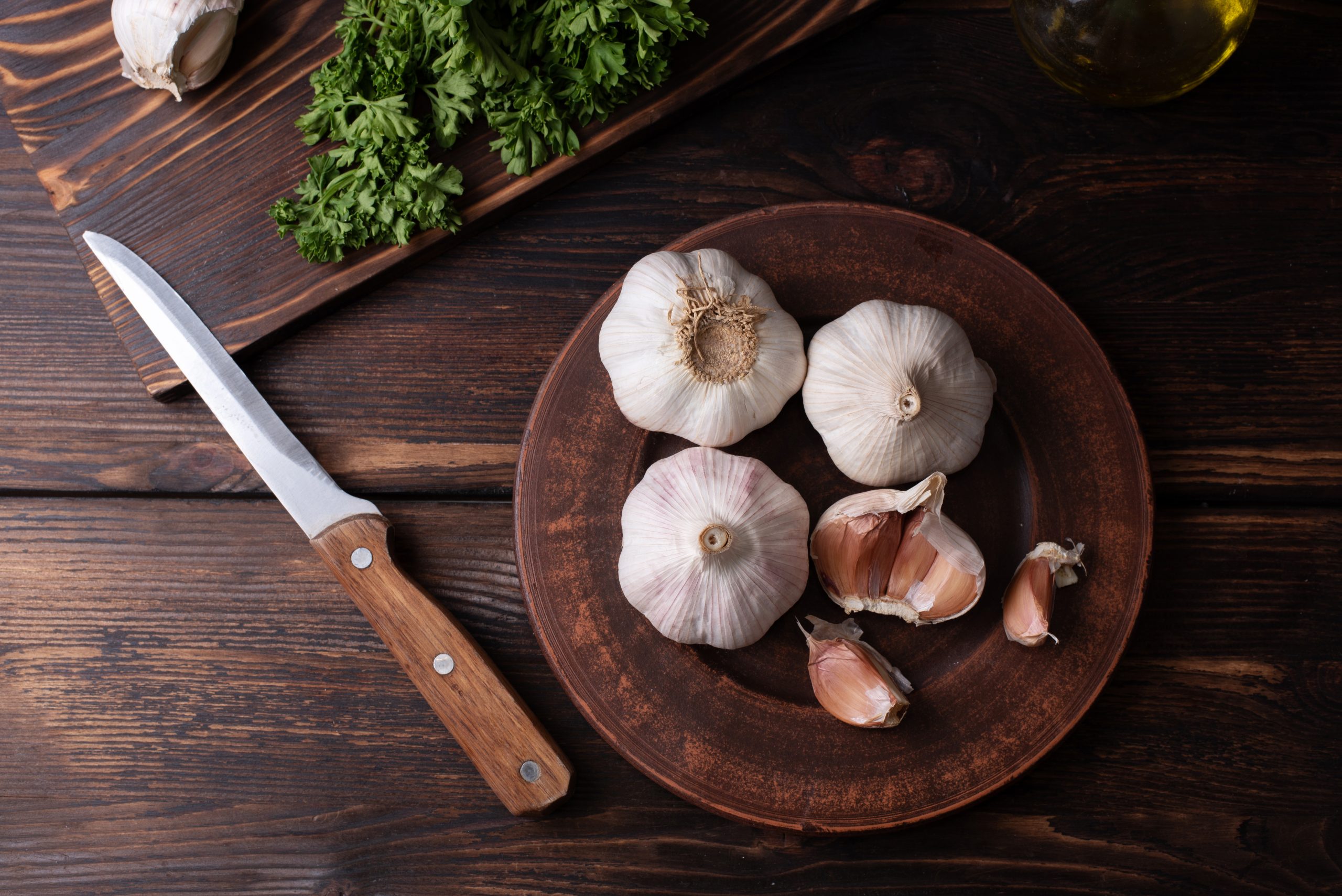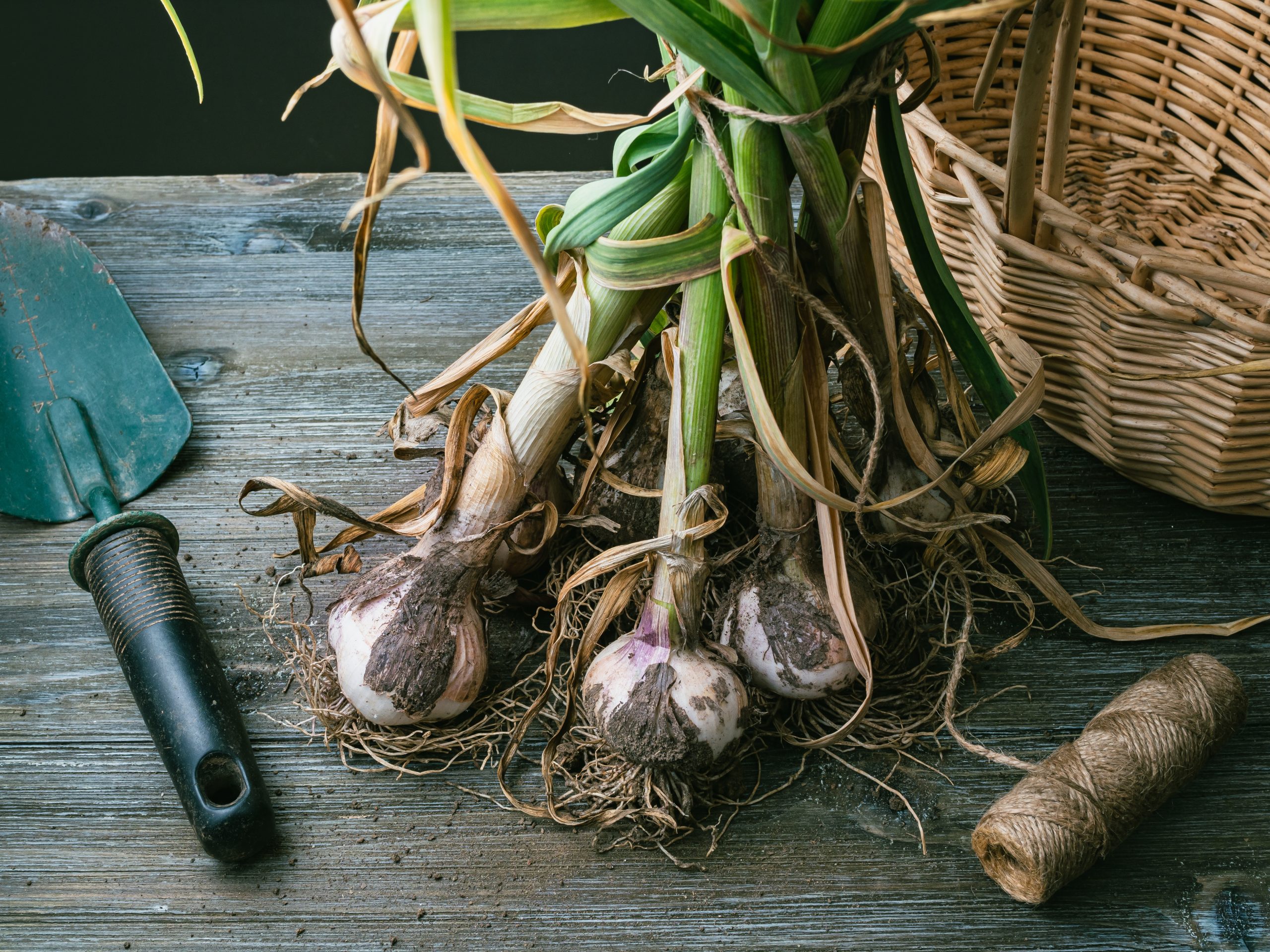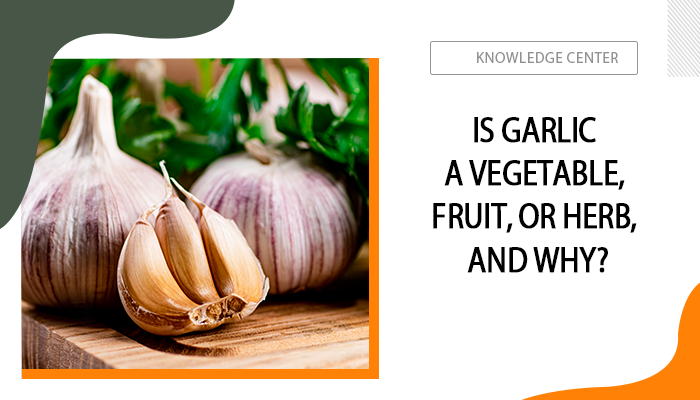Garlic seems like a vegetable, however, we don’t always eat a clove of garlic, do we? More often, garlic is used as a natural seasoning to flavor other vegetables or dishes. In other words, garlic is considered a spice on most occasions, which makes it confusing when classifying it. Is garlic a vegetable, fruit, or herb? Read on to see our explanation.
Table of Contents
Is Garlic A Vegetable
Yes. Botanically speaking, garlic (Allium sativum) is a type of vegetable that belongs to the onion family, which also includes onions, leeks, and chives. Although garlic is often used as a flavoring agent in cooking, it is indeed classified as a vegetable and not a herb or fruit.
Is Garlic A Root Vegetable
I know garlic is often referred to as a root vegetable, but this classification is not entirely accurate from a botanical standpoint. While garlic does grow underground like many root vegetables, the part of the garlic plant that we eat is actually a bulb, not a true root. The true roots are not the parts that are typically consumed.
So, while garlic is often grouped with root vegetables such as white carrots, parsnips, and radishes in culinary contexts, due to its growth habit and similar uses, it's more accurate to refer to it simply as a bulbous vegetable rather than a true root vegetable.
Why Is Garlic A Vegetable
To answer this question, we need to first know the definition of vegetables. We cook various vegetables every day, but what is the classification exactly? In botanical terms, vegetables are the edible parts of plants, including roots, stems, leaves, flowers, and bulbs.
Think about the garlic now. It has roots, a stalk, mature bulbs, and flowers. It’s easy to tell that many parts of the garlic plant can be eaten, say, the roots and the bulbs, so garlic qualifies as a vegetable.
Culinary Uses of Garlic
Garlic can be intense and pungent when raw, and it mellows and sweetens as it cooks. Thanks to its unique flavor, garlic can add depth, warmth, and complexity to a variety of dishes when used as a herb or spice. As a key ingredient in numerous global cuisines, such as Italian (garlic bread, pesto), Chinese (stir-fries), Middle Eastern (hummus), and many others, garlic can be found on the table easily.

Health Benefits of Garlic
Garlic is well-known for being low in calories but rich in vitamins C and B6, manganese, selenium, and other antioxidants. Some studies suggest that consuming garlic might enhance the body's immune cell function, possibly leading to reduced severity and duration of colds and flu. Additionally, it’s beneficial for your health in the following aspects:
- Reduce blood pressure and cholesterol levels, which can support overall heart health.
- Garlic contains a compound called allicin, which has been found to have antimicrobial properties against a variety of pathogens, including bacteria, viruses, and fungi.
- Some research indicates that garlic might reduce the risk of certain types of cancers.
- There are preliminary studies showing garlic's potential in improving insulin sensitivity and thus help in the management of blood sugar levels, especially in type 2 diabetes.
- Garlic can support digestive health by promoting a healthy gut microbiome, thanks to its prebiotic properties.
Can I Grow Garlic on My Own
Absolutely! Garlic is generally considered easy to cultivate in your home garden. Even beginners can follow the simple tutorial on how to grow garlic and expect a rewarding indoor gardening experience.
- Choose the Right Variety
Select a garlic variety that suits your climate and preferences. Hardneck varieties are known for their scapes and are often grown in cooler climates, while softneck varieties are commonly grown in warmer areas.
Note: Avoid planting garlic cloves from the grocery store, as they may be treated to prevent sprouting or may not be suitable for your local climate. Instead, purchase garlic bulbs from a reputable nursery or garden center.
- Find the Right Location
Garlic prefers full sun and well-drained soil. If your soil is heavy or clayey, consider adding some compost or sand to improve drainage.
- Plant at the Right Time
In cooler climates, garlic is typically planted in the fall, around 6-8 weeks before the first hard frost. In warmer climates, you can plant garlic in late winter or early spring.
- Prepare the Soil
Loosen the soil and mix in some organic matter like compost to provide nutrients.
- Plant the Cloves
Break a garlic bulb into individual cloves, keeping the papery skin on.
Plant the cloves pointy end up, about 2 inches deep and 6 inches apart.
Rows should be about 12 inches apart.
- Water and Mulch
Water the garlic well after planting and add a layer of mulch (like straw or leaves) to help retain moisture and suppress grass.
- Harvest
If you're growing hardneck garlic, you can harvest the scapes (flower stalks) when they appear for a mild garlic flavor. If not, garlic is typically ready to harvest when the lower leaves start to yellow and wither, usually in late spring to early summer. You can carefully dig up the bulbs and let them dry in a well-ventilated area out of direct sunlight for a week or two. Once dried, trim the roots and stalks, and store them in a cool, dry place.

For more detailed stages of growing garlic, please refer to this article: What Are the 6 Stages of Growing Garlic: Timeline & Signs
Conclusion
Garlic is indeed classified as a vegetable. It is part of the Allium genus, which includes other well-known vegetables like onions, leeks, and shallots. However, it’s not a root vegetable. While sometimes mistaken for a root vegetable because it grows underground, the bulb is actually a modified stem used by the plant to store energy and nutrients. Valued for its culinary versatility, distinctive taste, and potential health-promoting qualities, garlic is widely accepted and consumed around the world.






